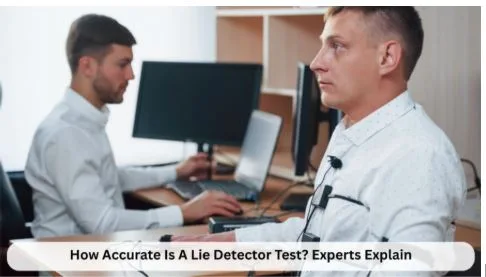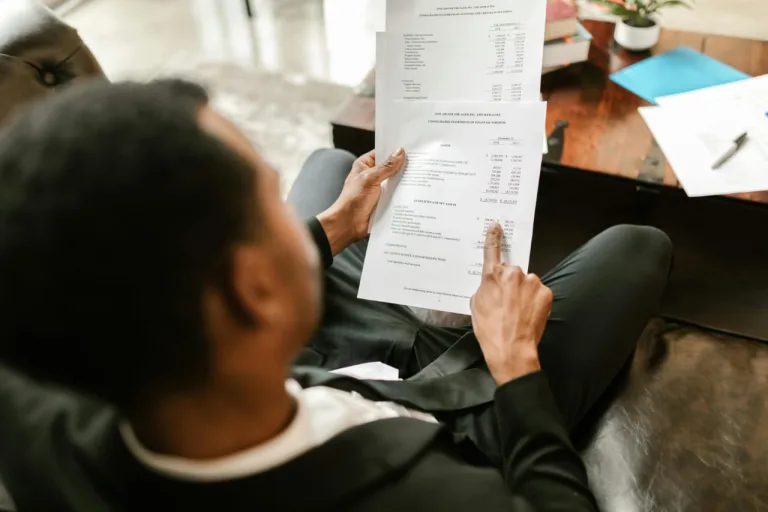How Accurate Is A Lie Detector Test? Experts Explain
Can polygraphs accurately detect lies?
This question continues to boggle the minds of many, with opinion seemingly divided right down the middle.
Many polygraph proponents are quick to recommend the technique as a foolproof way of discerning deception. According to advocates, lie detector tests can produce remarkable accuracy scores if administered by qualified examiners and in strict adherence to the industry regulations.
However, critics vehemently disagree. Skepticism is mainly fueled by a lack of consensus on the polygraph’s reliability within the scientific community.
So, just how accurate can a lie detector test be?
Read on as we help put that question into perspective.
How Accurate Are Polygraph Tests?
There seems to be no consensus on the standard accuracy score for a lie detector test. According to the American Polygraph Association (APA), polygraph techniques used in specific issue testing should hit impressive scores of 90% or more.
Specific issue testing is a type of polygraph exam administered to investigate single events like domestic thefts or workplace embezzlements. When conducting these lie detector tests, an examiner should stick to the matter under investigation rather than bring up past similar occurrences.
However, pundits have challenged the APA’s benchmarks on polygraph accuracy. Most independent studies suggest that lie detector tests have an average accuracy of 70% – 95%.
Why the Discrepancy?
Even if we dispute the APA’s requirements on polygraph accuracy and go by the 70% – 95% range, questions still abound.
Why can’t lie detector tests be 100% accurate? More importantly, what causes the discrepancies in the accuracy scores?
Polygraphs measure physiological changes associated with deception.
Most lie detector equipment tracks fluctuations in heart rate, blood pressure, perspiration, and respiration. Modern polygraphs are also equipped with motion sensors, enabling examiners to monitor body movements indicative of deception.
The physiological reactions measured by lie detector tests are incredibly difficult to manipulate. That’s because they’re controlled internally, by a division of the Peripheral Nervous System (PNS) known as the Autonomic Nervous System (ANS).
As it’s impossible to doctor the metrics monitored by polygraph exams, you’d expect these tests to be 100% accurate.
So, why isn’t that the case?
First, there’s no scientific proof that changes in cardiovascular activity, skin conductance, or respiration can identify deception. At least, not of and by themselves. That leaves significant room for false positives or false negatives.
We can always bridge the gap by integrating other investigative techniques into polygraphy, such as forensic psychology. But then, taking a hybrid approach to lie detection means we wouldn’t easily pinpoint the most accurate lie detection method from the lot.
Secondly, lying isn’t the only stimulus that activates the autonomic nervous system. There’s also stress and anxiety.
Studies have shown that anxiety cannot alter the accuracy of a properly administered lie detector test. However, it can trigger the same physiological processes measured during polygraphs. An examiner would need an extra keenness for detail to infer whether a spike in perspiration or blood pressure results from deception or a stressed mind.
Finally, polygraphs don’t detect lying directly. They only measure patterns associated with deception.
How to Conduct a Credible Polygraph Test
- Start With a Qualified Examiner
Working with an incompetent examiner is the quickest way to bungle a polygraph exam. To address most factors associated with inaccurate lie detector tests, insist on a qualified examiner.
Select a polygrapher who graduated from an APA-accredited school. Besides, the individual must have acquired practical knowledge through rigorous internship and actual practice.
You can vouch for an examiner’s experience by asking for a list of referees or checking how they rank in online reviews.
Better yet, you could ask them the following industry-related questions while noting their response;
- Which professional body do you belong to? (The APA should be one of them)
- How long do polygraphs last? (1.5 – 2.5 hours)
- What categories of polygraph questions are there? (Relevant, Control, Irrelevant)
- What can I do to pass a polygraph test? (Simply answer every question truthfully)
- Follow Guidelines on Question Design
A professional polygraph examiner would already understand the industry’s guidelines on question framing.
For instance, polygraph questions should be direct. The examinee must only answer ‘Yes’ or ‘No.’ No room for narrations.
Lie detector test questions should also be unambiguous and non-incriminating. Remember, the examinee enjoys the presumption of innocence until proven otherwise.
In single and multiple-issue polygraphs, the questions can be split into the following categories;
- a) Relevant
Relevant questions address the subject of investigation directly.
For instance, “Did you steal $50 from your supervisor’s desk last Tuesday?”
- b) Control
Control questions bring up past incidents that may be relevant to the matter at hand. They’re meant to evoke a stronger physiological reaction in truthful individuals.
Example: Have you ever stolen money from your workplace before?
- c) Irrelevant
Irrelevant questions provide the examinee with a breather between periods of intense questioning.
They can be about any general detail, such as: Is your name Tom Hawkins?
- Anticipate Countermeasures
Countermeasures are tactics deployed to manipulate the physiological functions measured by lie detector tests, with a view to beating the polygraph. They can be physical, mental, or pharmacological.
Physical polygraph countermeasures involve actions like fist clenching, lip biting, and teeth gnashing.
Meanwhile, mental countermeasures are designed to induce emotional inconsistencies. For instance, an examinee may force themselves to recall a blissful moment to remain calm while tackling potentially unsettling questions.
Lastly, pharmacological countermeasures entail taking drugs ahead of a polygraph test. Commonly administered medications include antidepressants like Xanax.
Although countermeasures are a leading cause of inaccurate lie detector tests, it’s another concern that professional examiners can address remarkably well.
Note that part of preparing individuals for polygraph tests entails recording their baseline reactions. Responses to the in-test phase are gauged against these baselines, making it difficult for countermeasures to work.
Wrap Up
Polygraph exams aren’t 100% accurate. But they can come incredibly close if professionally administered.
If you’re planning to conduct a lie detector test, insist on having the procedure undertaken by a qualified examiner.
Ask the polygrapher to show valid proof of their credentials. Ensure the individual was trained in an APA-approved school and underwent a due internship.
Even better, pick someone with practical industry experience spanning at least five years.
Specialization would be an added advantage. For instance, select an examiner trained in forensic psychology if you’re planning a law enforcement polygraph.
And to conduct a legally defensible polygraph test, ensure all ethical considerations are taken care of.






